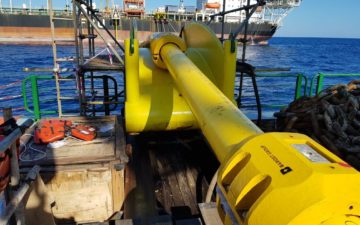
This means the UV light can penetrate deep into the water. When the UV-T is high, that is, close to 100 percent, the water is very clear. A more reliable UV performance measure, UV-T measures the capability of UV light to penetrate water. For this reason, UV-I values shouldn’t be used to compare systems.įortunately, another measurement called UV-transmission (UV-T) can be used to compare systems. In particular, the distance between the sensor and the UV lamp influences the measured UV-I. Most UV systems measure the UV-I, but the systems can vary considerably in terms of the UV lamp being used and the sensor setup. UV-I measures how much light (or energy) reaches a given measurement point.

The UV dose depends on the UV intensity (UV-I) and exposure time, and is simply defined as the product of these two parameters.

The percentage of non-viable or killed organisms in the water after treatment depends on the applied UV dose. The UV treatment uses either low pressure or medium pressure UV lamps to break down cell membranes and/or damage their DNA, which respectively kills the organisms or destroys their ability to reproduce, making them non-viable. The water bypasses the filter and gets pumped through the UV chamber before it is discharged ( see Figure 2). To avoid potential non-compliant ballast water discharge due to organism regrowth in the tanks, the ballast water is treated with UV light again during de-ballasting. After filtration, the ballast water is routed via UV chamber(s) to the ballast tanks. During ballasting operations, both filtration and UV treatment are applied. UV based treatment BWM systems based on UV treatment typically apply two treatment steps: filtration and UV treatment.
#Ballast vessel meaning code#
Since the revision, the IMO now states that type approval according to the new BWM system code MEPC.300(72) (also referred to as the revised G8) is mandatory for all BWM systems installed on vessels after October 28, 2020.ĬompactClean, a BWM system from DESMI, is type approved in accordance with the IMO’s BWM system code and as such ready for the future. The IMO guidelines for type approval of BWM systems were revised in October 2018. The Ballast Water Management (BWM) Convention administered by IMO sets the international standard for ballast water treatment. Therefore, it is one of the approaches ship owners and operators typically adopt in order to be in compliance with the mandatory discharge standards imposed by the International Maritime Organization (IMO) and the U.S.

The treatment of ballast water before discharge is important because it prevents the transport and introduction of potentially invasive species in local eco-systems through ship’s ballast water. Specifically, it’s important to understand how the BWM system impacts a vessel’s operations, as the ballast water being pumped on board the vessel can vary considerably, and different BWM systems handle the various water qualities differently.
#Ballast vessel meaning full#
Having a full understanding of the different BWM technologies, their benefits and limitations, sets the foundation for making the right decision when selecting a BWM system. Figure 1 shows the different technologies installed on vessels. According to Clarkson’s World Fleet Register, the most common technologies for BWM are ultraviolet (UV)-based systems and electrochlorination (EC) systems. In particular, this white paper puts a spotlight on the overlooked but potentially serious complications related to operating UV BWMS with different operating modes to obtain respectively USCG or IMO compliance.Īs of October 2019, close to 10,000 vessels- nearly 10 percent of the global vessel fleet-have been fitted with a ballast water management (BWM) system. It offers a comparison between the two technologies and explores the benefits and challenges faced by their operators. This white paper provides an overview of the two most prominent ballast water management (BWMS) technologies installed on today’s vessels-ultraviolet (UV)-based systems and electrochlorination (EC) systems.


 0 kommentar(er)
0 kommentar(er)
